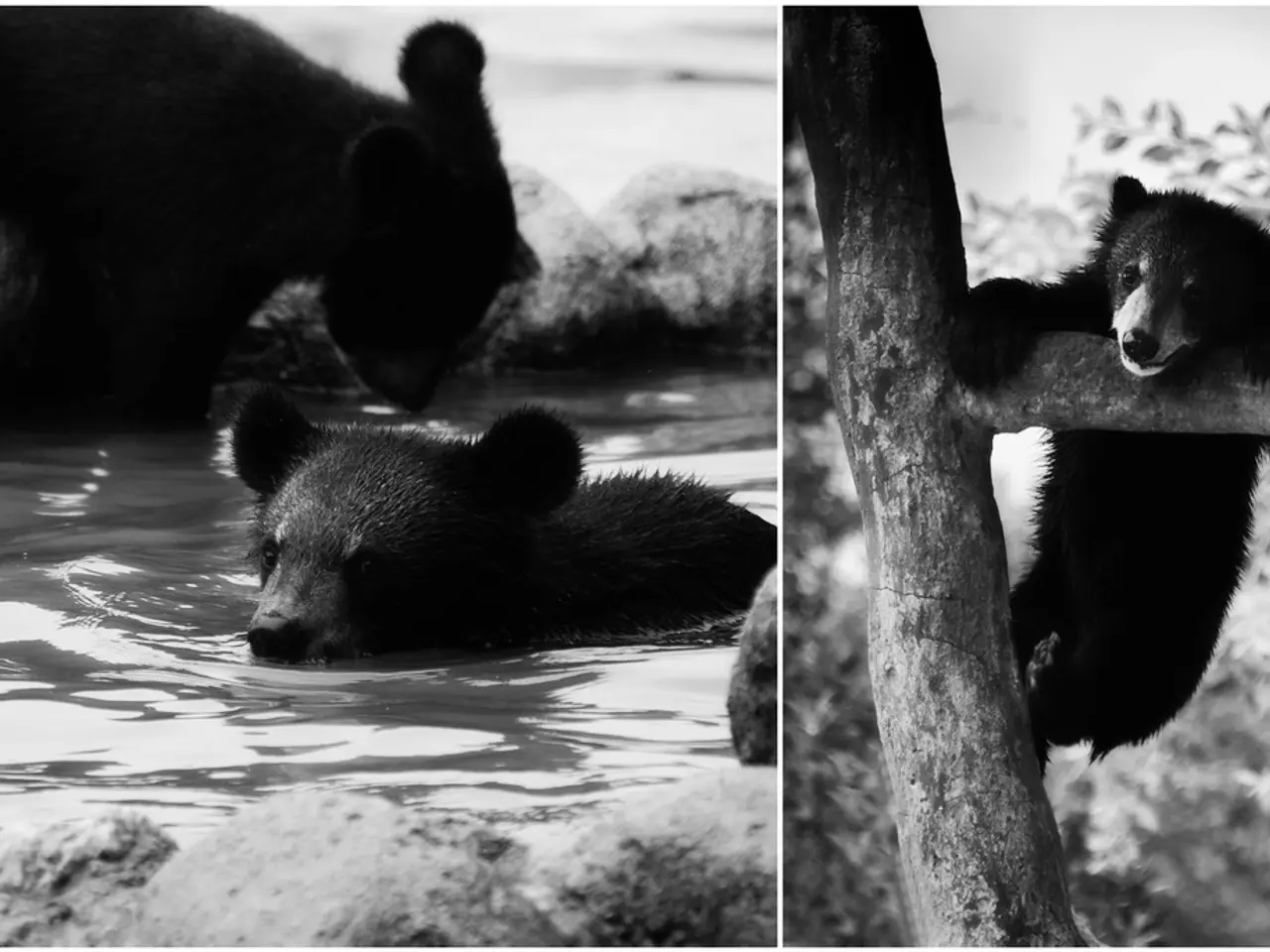Unnerving Factors that Make the Yukon-Charley Rivers National Preserve in Alaska a Perilous Destination
Headline: Preparing for a Safe Adventure in Yukon-Charley Rivers National Preserve
Embarking on a self-sufficient trip to Yukon-Charley Rivers National Preserve, Alaska, requires careful planning and preparation for extreme remoteness, lack of amenities, and natural hazards. Covering 2.5 million acres of rugged wilderness, the preserve is accessible only by plane, boat, or long dirt roads during the summer months [1].
River Crossings and Travel
When navigating the Yukon River, expect icy, fast-flowing water with strong currents that pose risks to boaters and pedestrians. Use appropriate watercraft, wear life jackets, and ferry or cross only in calm, shallow areas. When crossing creeks or smaller channels on foot, test footing carefully and use a sturdy pole for balance, crossing with a group if possible [1]. Carry emergency communication devices such as satellite phones or PLBs since cell service is unavailable [1]. Plan your route based on known landmarks and topographic information; detailed nautical charts may help for river navigation [2].
Bear Safety
Bears are a significant consideration when heading into the Alaskan wilderness, including Yukon-Charley Rivers National Preserve. To ensure safety, carry bear spray and know how to use it effectively. Make noise while hiking to avoid surprising bears, and store food securely away from camp using bear-resistant containers or hanging it [1]. Camp in open areas to increase visibility. Stay alert and recognize signs of bears, such as claw marks or bear scat. In the event of an encounter, remain calm, do not run, speak softly, and back away slowly if the bear is not aggressive. If attacked, follow the appropriate response for the type of bear (grizzly vs black bear) following national park guidelines [1].
Additional Tips
Thoroughly prepare for wilderness survival, including first aid, navigation, and weather protection. Inform someone outside the preserve about your itinerary and expected return. Be flexible and prepared for sudden weather changes or delays. Familiarise yourself with the park’s regulations and alerts before departure [4].
Safety Measures and Precautions
To further ensure a safe trip, consider taking a backcountry and bear safety orientation at a visitor center. Proper precautions and gear, including hiking poles, are required for safe river crossing in Yukon-Charley Rivers National Preserve [1]. Injuries and deaths in Yukon-Charley Rivers National Preserve are rare, with the last incident other than natural disasters being a boating accident in 2006.
Preparation is Key
In summary, thorough planning, experiential knowledge of backcountry travel, caution with river crossings, and strict bear safety protocols are key to a safe, successful self-supported trip into Yukon-Charley Rivers National Preserve [1][2]. Pack essentials such as warm socks for river crossings to change out when feet get cold and wet, and always remember to leave a trip plan with your loved ones and your transportation [1]. Adventure seekers go to Yukon-Charley Rivers National Preserve for its untouched beauty and solitude, but must consider these dangers and take the necessary precautions to ensure a safe and memorable trip.
- To enhance your adventure travel in Yukon-Charley Rivers National Preserve, consider supplementing your travel guides with information on outdoor-living and home-and-garden, such as techniques for wilderness survival and appropriate clothing for cold weather.
- For a more immersive lifestyle experience, try replacing the standard travel guides with adventure-travel guides that focus on the unique challenges and experiences of self-supported travel in rugged wilderness areas like Yukon-Charley Rivers National Preserve.
- Preparing for a safe trip to Yukon-Charley Rivers National Preserve doesn't just involve travel guides and planning for the journey; it's also essential to equip yourself with the right home-and-garden gear, such as bear-resistant containers and sturdy hiking poles, to ensure your outdoor-living and adventure-travel needs are met during your self-sufficient trip.




